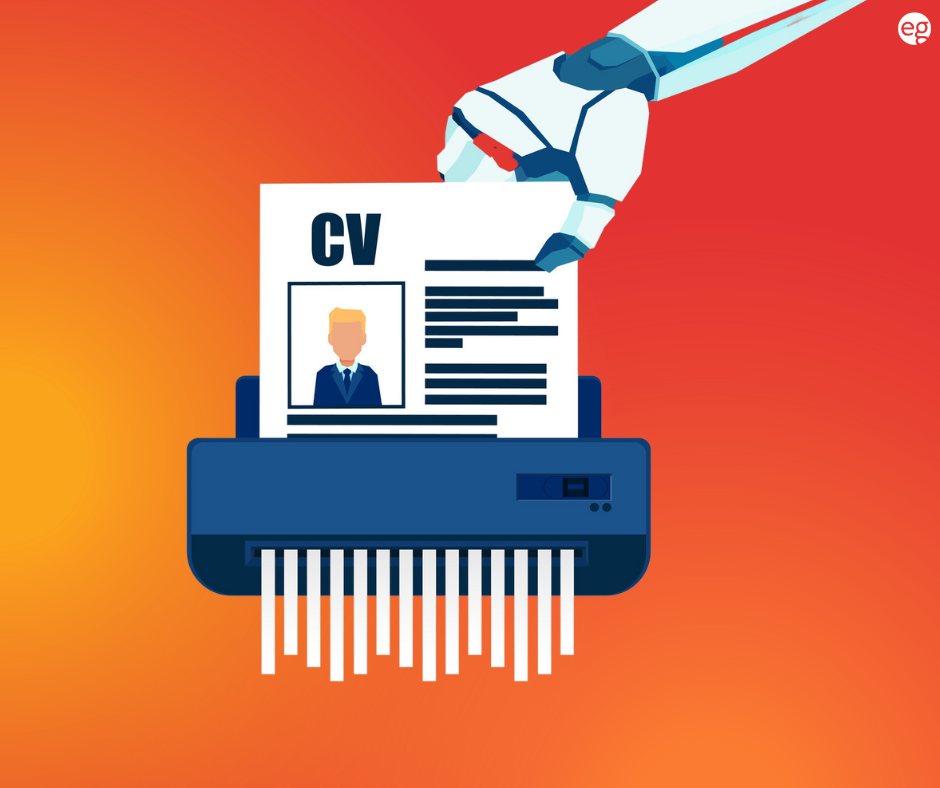Whether you’re a seasoned professional or fresh in the job market, understanding the nuances of job negotiation can be essential to more compensation, improved benefits, and a higher job title. In this comprehensive guide, we’ll do a deep dive into the strategies behind negotiating compensation.
Negotiating your job offer is crucial for several important reasons:
Your initial job offer might not reflect the true market value of your skills and experience. Negotiating helps ensure you’re fairly compensated according to industry standards and your qualifications. And your starting salary often sets the benchmark for future raises and bonuses. A higher starting salary can lead to greater earnings over your career.
Negotiating your job offer is a way to communicate your value to the employer. It shows that you understand the worth of your skills and experience, and you’re confident in your ability to contribute meaningfully to the organization.
Accepting a job offer that meets your financial needs and career expectations can lead to higher job satisfaction. You’re more likely to feel valued and motivated, which can positively impact your performance and career progression.
Effective Negotiation Strategies
1. Assessing Your Worth
- Market Research: Begin by researching the average salary for your role in your industry and region. Indeed, Glassdoor, and PayScale are excellent resources to access this data.
- Consider Company Size: Larger companies might have more resources for higher salaries, whereas startups may offer equity or other perks.
- Skill Evaluation: Consider your unique skills and experiences. If you bring something special to the table, it’s worth more. For instance, if you’re applying for a role in a tech company and you have advanced knowledge of a specific, in-demand programming language like Rust or Go, that’s a unique skill. Few candidates might possess this expertise, making you more valuable to the employer. Or, if you’re in a niche industry, your years of experience can be a unique asset.
2. Preparing for Negotiation
- Know Your Minimum: Determine the lowest offer you’re willing to accept. Consider factors like cost of living, benefits, and growth opportunities. If the compensation is below this number, it is not worth it to accept the position.
- Non-Salary Benefits: Remember, negotiation isn’t just about salary. Think about other benefits like remote work flexibility, vacation time, professional development opportunities, and medical insurance.
3. Negotiating the Entire Compensation Package
- Prioritize: If negotiating multiple things, rank them in order of importance to understand what your desired outcomes are, where you may be willing to compromise, and what you absolutely must have from a compensation package.
4. Timing Is Everything
- Wait for the Right Moment: Don’t jump into negotiation too early. Wait until the job offer is made but before you accept it. This shows the employer you’re serious about the role and allows room for discussion.
5. Express Enthusiasm
- Positive Approach: Show excitement about the role and the company. This sets a collaborative tone for the negotiation.
6. Articulating Your Value
- Examples of Past Achievements: Use specific examples from your past work that showcase your skills and how they benefit the company—not your personal needs or financial situation.
- Future Contributions: Discuss your potential contributions and how they align with the company’s goals.
- Monetary Value Amount: Include data from other offers, if relevant, and provide an exact desired compensation number.
7. Negotiating Benefits and Perks
- Flexibility and Work-Life Balance: If the salary is non-negotiable, pivot to benefits. Discuss options like flexible working hours or additional vacation days.
- Professional Development: Request opportunities for growth like training programs or attending industry conferences.
Job Offer Negotiation Examples
Let’s bring it all together with customizable templates. When it comes to negotiations, HR generally prefers video or phone conversations to read your tone of voice and ask for clarification, especially if there are large differences in terms of the initial offer and what you are asking for.
What to Say in a Phone Conversation
Prepare by emailing the employer for a convenient time to discuss the offer.
- Greeting and Gratitude:
- “Hello [Employer’s Name], thank you for taking the time to speak with me today. I hope your morning/afternoon is going well.”
- Express Enthusiasm:
- “I wanted to start by saying how excited I am about the offer for the [Job Title] position and the opportunity to work with [Company Name]. I am very enthusiastic about the potential to contribute to [specific projects or aspects of the company’s work].”
- Initiate the Discussion:
- “I’ve had some time to review the details of the offer and I’d like to discuss a few points to ensure that the offer aligns with both my qualifications and the industry standards. Is now still a good time?”
- Present Your Research:
- “Based on my research from [sources like PayScale, Glassdoor], I’ve found that positions similar to [Job Title] typically offer a salary in the range of [provide researched salary range].”
- Highlight Your Unique Skills:
- “As discussed in the interviews, my unique skills, such as [any special], bring added value to this role. For instance, my experience in [specific experience or achievement] uniquely positions me to contribute effectively to [Company Name’s specific needs or projects].”
- Express Willingness to Find Common Ground:
- “I am very much looking forward to being part of the team and am hopeful we can find a mutually beneficial agreement. I’m open to discussing this further and finding a balanced approach.”
- Invite Open Discussion:
- “I’d love to hear your thoughts and am open to any suggestions or alternative arrangements you might have in mind.”
- Conclude Positively:
- “Thank you again for considering my perspective. I am very enthusiastic about the opportunity to work with [Company Name] and contribute to its success.”
What to Say in an Email Negotiation
If you are negotiating a small aspect of the compensation package, an email can be sufficient.
Dear [Employer’s Name],
I hope this message finds you well . First and foremost, I want to express my sincere gratitude for offering me the position of [Job Title] with [Company Name]. I am genuinely enthusiastic about the opportunity to become a part of such a dynamic and innovative team and am eager to contribute to the company’s continued success, especially in areas like [mention specific projects or company goals relevant to your role].
Before I can accept your offer, I would like to discuss the proposed compensation. As I shared during the interview process, I have [qualifications]. Given my experience and expertise and market data, I am seeking a salary of [desired compensation] which is slightly higher than your offer of [offered compensation].
After careful consideration and market research, I want to discuss some aspects of the job offer to ensure it aligns with industry standards and my professional experience and skill set. My research, based on data from [sources like PayScale, Glassdoor, industry-specific salary surveys], suggests that the typical compensation range for similar roles in [your location/industry] averages [provide researched salary range].
Furthermore, I believe my unique skill set, including [mention any special skills or experiences you have], adds significant value to the role. For instance, my experience in [specific experience or achievement] has equipped me with [specific skills or knowledge] that will directly benefit the [specific project or aspect of the company’s work].
I am confident that we can find a mutually agreeable term that reflects the value I am excited to bring to the team. I am open to discussing this further and finding a balanced approach that aligns with both my aspirations and the goals of [Company Name].
Thank you for considering my request. I am very much looking forward to the possibility of working together.
Warm regards,
[Your Name]
Negotiating a job offer can be intimidating, but it’s an essential skill that can significantly impact your career trajectory. By understanding your worth, preparing effectively, and using the right strategies, you can ensure that your job offer reflects your value as a professional. Remember, negotiation is a two-way street; it’s about finding a balance that satisfies both you and your employer.
About EG Workforce Solutions
We’ve been in this business for decades and have developed a deep network of professional connections. Whether they’re companies looking for talent, job seekers looking for work, or an up-and-coming store in need of some temporary help, we know the right people to bridge the gap between the hiring and the hired.
But what’s more, we get to know people. From employers hiring to candidates looking, we take the time to listen and learn. We hear your likes, talents, and needs. We gain an understanding, and with it, we’re able to facilitate lasting relationships between businesses and people.
The buzz around AI and its potential to transform industries can be both exhilarating and concerning for both job seekers and the currently employed.
The growing fear of workers that AI is taking over jobs often overshadows the reality. AI is designed to enhance, not replace, human capabilities. It augments your skills, making you more efficient and effective in your role. Some of your job responsibilities may be automated by AI in the future, such as some clerical tasks, but your position will shift to accommodate the new AI technology.
However, amidst the chatter of automation and AI integration, there’s a fundamental truth: your job security remains strong, especially when you harness your inherent human traits with the innovative capabilities of AI to do your job even more effectively.
The Value of Your Human Skills
In the age of AI, your inherently human traits are your greatest assets.
Firstly, your inherent human capabilities are your ability to understand context, make decisions based on multiple factors, basic conflict resolution, communication, and relationship-building.
Secondly, domain expertise is deep-rooted knowledge of a particular subject. This knowledge is indispensable, especially when AI encounters server challenges or provides inaccurate information.
These skills are difficult for AI to replicate because they are uniquely human.
The Most In-Demand Skills for 2024
As you fortify your job security by honing your human traits, it’s essential to align your strengths with the evolving demands of the employment market. Understanding the most in-demand skills and careers for 2024 provides a roadmap for making informed career decisions and leveraging your unique strengths in an AI-influenced workplace.
When it comes to in-demand skills in 2024, there are two broad categories: technological skills and soft skills. According to McKinsey, high-skill, technical jobs are going to be the most in-demand, such as Artificial Intelligence and Machine Learning. However, the ability to work with AI while also standing out will be crucial. Make informed decisions about your career path by looking closely at what each category entails.
Technological skills in demand:
- Artificial Intelligence and Machine Learning: With the increasing adoption of AI, professionals who can develop and implement these solutions will be highly sought after.
- Cybersecurity: Protecting organizations from cyber threats will remain crucial, creating a rising demand for cybersecurity professionals.
- Data Analytics: Analyzing and contextualizing vast amounts of data collected by AI and automation will be essential.
- Cloud Computing: Designing, implementing, and maintaining cloud-based systems will be increasingly important.
Soft skills in demand:
- Emotional intelligence: Understanding and managing emotions, as well as influencing others, will become an increasingly valued skill.
- Creativity: As automation handles routine tasks, the ability to innovate and create will be highly prized.
- Leadership: Most CEOs agree the foundation of a successful business is the ability of leaders to build relationships with their teams that inspire productivity. This idea isn’t going away.
- Adaptability: Given the pace of technological advancement, the ability to learn quickly and adapt to new situations is crucial.
Career Paths with In-Demand Skills:
Understanding the in-demand skills for 2024 guides individuals looking to grow toward certain career paths where these skills are vital:
- Software Developer: Designing, coding, and implementing IT systems.
- Cybersecurity Analyst: Protecting against digital threats in an ever-evolving online environment.
- Cloud Architect: Designing infrastructure for companies transitioning to cloud-based computing.
- Data Analyst/Scientist: Analyzing and harnessing big data effectively in various contexts.
- Nurse Practitioners and Health Care Support: Roles experiencing a 40% increase in demand.
- Business Management Analyst: Focusing on improving overall business operations considering various contexts.
For those whose current roles or passions may not seem to directly align with the identified top in-demand skills or career paths for 2024, fret not. Your uniqueness and current position still hold relevance in the evolving job market. There is a significant need for collaboration with AI and the enhancement of your distinct human skills.
Your Roadmap to Embracing Job Security
To fortify your job security in the age of AI, consider the following strategies:
- Enhance your unique human skills: Invest in improving your interpersonal skills, decision-making, and effective communication. These skills make you an indispensable asset to any organization.
- Leverage your domain expertise: Capitalize on your years of experience and deep knowledge of your field. If you’re just starting out in a professional career—don’t panic! Build your knowledge bank by seeking out mentors who can help you grow and develop in your industry.
- Diversify your skill set: Sometimes, certain skills obtained in one role or industry can be applied effectively and innovatively in different contexts. The ability to transfer knowledge and contexts is difficult for AI to replicate.
- Adaptability is key: Embrace continuous development, learning new skills, and implementing AI into your daily routine. AI is a tool that will help your effectiveness and job performance.
Job seekers, take heart: your job security isn’t at risk because of AI. Instead, it’s strengthened when you tap into your inherent human traits—your ability to comprehend context and your real-world experience. Embrace these skills, invest in their development, and confidently step into the future where humans and AI collaborate.
About EG Workforce Solutions
We’ve been in this business for decades and have developed a deep network of professional connections. Whether they’re companies looking for talent, job seekers looking for work, or an up-and-coming store in need of some temporary help, we know the right people to bridge the gap between the hiring and the hired.
But what’s more, we get to know people. From employers hiring to candidates looking, we take the time to listen and learn. We hear your likes, talents, and needs. We gain an understanding, and with it, we’re able to facilitate lasting relationships between businesses and people.
Technological advancements have made data analytics crucial for businesses to make informed decisions and demonstrate ROI on all initiatives. For Talent Acquisition and Human Resources teams, talent analytics has emerged as a game-changer.
Talent analytics allows recruiters and HR professionals to make smarter decisions about hiring, employee development, and retention.
At EG Workforce Services, we understand the value of talent analytics. We believe that leveraging data helps organizations find and retain top talent. Here are five of the best ways HR teams can leverage talent analytics as part of their recruitment strategy.
The Importance of Recruitment Analytics in Talent Acquisition
Talent analytics involves collecting and analyzing data related to your workforce, including employee performance, engagement, and retention rates. HR professionals can make impactful hiring, training, and development decisions. According to a survey conducted by Deloitte, 71% of companies see people analytics as a high priority. Harnessing the power of talent analytics also offers a competitive edge for recruiting top talent, enabling your organization to make informed hiring decisions that meet your unique needs.
Making inaccurate hiring decisions can be a costly mistake for businesses, impacting employee development and retention. This is why it is crucial to identify the right candidate for the job. Talent analytics can support recruiters in assessing candidates effectively by comparing their skills and experience with the job requirements. Furthermore, data analytics can identify candidates with a history of long-term employment, indicating their potential to stay with the company for an extended period.
Measure Employee Performance
One of the biggest challenges HR faces is measuring employee performance. While traditional methods such as performance reviews are useful, they do not always provide accurate insights regularly. Talent analytics can help HR teams measure employee performance on an ongoing basis by providing real-time feedback on engagement, productivity, and other key metrics.
Predict Employee Turnover
Employee turnover is a significant cost pain point for businesses, affecting productivity, morale, and ultimately your bottom line. Talent analytics can help HR professionals predict employee turnover by analyzing employee behavior, including attendance, performance, and engagement. This information can help businesses take proactive measures to retain top talent by addressing issues before they escalate.
It can be difficult to pinpoint turnover. EG Cares, our proprietary employee engagement data collection software, uncovers the true causes of turnover and improves employee satisfaction. For many clients, it’s brought their Employee Net Promoter Score (ENPS) from a detractor score to a strong promoter score.
Leverage Data for Employee Development
Effective talent development programs are essential for employee satisfaction and retention. Talent analytics can help HR teams identify skills gaps and suggest focused training and development programs to close those gaps. Data analytics can also help in identifying high-potential employees and providing them with opportunities to grow within the organization.
At EG Workforce Solutions, we find, keep, and grow talent. Our Talent Strategy solution, Empower, helps our clients efficiently grow their talent. One of our clients in the food manufacturing industry increased leader preparedness by 30%, leadership skills by 15%, and awareness of company policies by 11% with Empower.
Foster Diversity and Inclusion
Diversity and inclusion are essential for business success, and talent analytics can help HR teams foster both. Data analytics can assist businesses in identifying where their diversity gaps exist and create strategies to increase diversity. In addition, analytics can also help HR teams measure their diversity and inclusion initiatives’ effectiveness, ensuring they are making progress toward their goals.
Talent analytics has emerged as a critical tool for businesses to make informed decisions about hiring, employee development, retention, and diversity and inclusion. At EG Workforce Services, we recognize the value of talent analytics and are committed to helping our clients leverage data for smarter talent acquisition decisions. Implementing different types of analytics can significantly impact HR management by enabling businesses to identify the right candidates, measure employee performance, predict employee turnover, foster diversity and inclusion, and leverage data for employee development. By using talent analytics, businesses can find and retain top talent, resulting in higher productivity and better business outcomes.
About EG Workforce Solutions
We’ve been in this business for decades and have developed a deep network of professional connections. Whether they’re companies looking for talent, job seekers looking for work, or an up-and-coming store in need of some temporary help, we know the right people to bridge the gap between the hiring and the hired.
But what’s more, we get to know people. From employers hiring to candidates looking, we take the time to listen and learn. We hear your likes, talents, and needs. We gain an understanding, and with it, we’re able to facilitate lasting relationships between businesses and people.
In modern workplaces, the concept of leadership is undergoing a significant transformation. Now, more than ever, candidates are looking for companies that lead with compassion. The traditional authoritarian style of leadership is making way for a more empathetic and compassionate approach. To succeed in meeting business goals, empathic leadership is the key to attracting, engaging, and retaining your talent.
Understanding Compassionate Leadership
What does it mean to lead with compassion?
Compassionate leadership is about creating a work environment where empathy, kindness, and respect are the guiding principles. It stands apart from traditional styles by embracing new ideas or approaches – even mistakes – rather than rigid black-and-white perspectives.
The key characteristics of compassionate leadership include:
- Empathy: Traditional leadership styles often focus more on achieving goals and objectives, sometimes at the expense of understanding the emotional needs of team members. Alternatively, compassionate leaders actively seek to understand and connect with their team members on a personal level, showing genuine care for their well-being.
- Patience: Traditional leadership attitudes may be inclined to reprimand or punish failures. Whereas compassionate leaders recognize that people make mistakes and have different learning curves. Rather than reacting harshly to errors, they see them as opportunities for further growth.
- Recognition: Traditional leaders may not always express appreciation openly or may focus primarily on task completion. However, compassionate leaders prioritize acknowledging and appreciating their team members’ efforts and contributions.
- Respect for Individuality: Traditional leadership styles often lean toward a one-size-fits-all approach, expecting everyone to adhere to specific expectations and standards. Compassionate leadership respects the individuality of team members. It values diversity and inclusivity, creating an environment where everyone feels respected and valued.
- Support: Traditional leaders may prioritize achieving specific performance metrics over personal and professional growth. Thus, there is often limited flexibility to accommodate individual career paths. Compassionate leaders prioritize the holistic development of their team members. This includes job-related skills, personal aspirations, well-being, and work-life balance.
The Impact of Compassionate Leadership on Talent Acquisition
Compassionate workplace culture has the power to attract and retain potential talent in compelling ways:
- Improved Talent Pipeline: The American Psychological Association reports that 92% of workers said it is very or somewhat important to work for an organization that values their emotional and psychological well-being, which compassionate leadership emphasizes.
- Impact on Employee Value Proposition (EVP): Your EVP is essentially what your organization promises workers in exchange for their contributions to the company including company culture and work-life balance. A strong EVP has been linked to a reduction in turnover by up to 28%, reducing cost-per-hire by 43%, and attracting up to 50% more qualified candidates. Companies with a compassionate culture often have excellent EVPs and become the preferred employers for talent with diverse backgrounds.
- Improved Candidate Experience: Compassionate leadership styles often extend their values to the recruitment process. When your organization’s cultures are evident and well represented, it will encourage more applicants who align with those values – ensuring a more mutual fit between the talent and your open roles. This can result in higher candidate satisfaction and a larger talent pipeline of referrals.
- Higher Offer Acceptance Rates: Candidates are more likely to accept job offers from organizations with compassionate cultures. A Society of Human Resource Management report states that companies with strong, compassionate cultures can see up to a 23% higher offer acceptance rate.
- Improved Employee Retention: Compassionate workplaces tend to have higher levels of job satisfaction. According to Gallup, organizations with satisfied employees see a 43% lower turnover rate.
Overcoming Challenges and Misconceptions about Compassionate Leadership
Misconception: Compassionate leadership is unprofessional.
Maintaining professionalism while leading with compassion is a delicate balance.
As a leader, you can demonstrate empathy and support for your team without compromising professional standards. Professionalism requires setting clear expectations and boundaries for behavior, workplace etiquette, and performance. At EG Workforce Solutions, we’ve found consistent success in leading with compassion through consistent, honest, and transparent communication. These are some of the successful ways we have professional, compassionate leadership:
- Encouraging everyone to set their own annual and quarterly objectives that align with our overall business objectives.
- Biweekly 1:1s to discuss personal and professional highs and lows and establish empathetic relationships between supervisors and direct supports.
- Daily morning meetings to check in with people on your team.
- Implemented Career Pathing guidelines to encourage professional growth for our team members.
- Quarterly coaching sessions that include bonuses.
- Shoutouts to team members highlighting their work or accomplishments during our weekly all-hands call.
Misconception: Compassionate leadership equates to leniency.
Some believe that compassionate leaders are overly permissive — allowing employees to get away with poor performance or behavior. However, compassionate leadership does not mean ignoring issues; it means proactively setting expectations and addressing issues in a constructive manner that ultimately helps the individual learn and grow instead of changing through shame.
How compassionate leaders provide constructive feedback:
- Choose the right time and place.
- Plan what you want to say and how you want to say it. Be clear about the specific issue and, together, create a solution to improve the issue.
- Use “I” statements instead of “you” statements to avoid sounding accusatory. For example, say, “I noticed that…”
- Ask open-ended questions to encourage a constructive discussion. Examples include, “How do you think we can address this issue together?” and “What are your thoughts on this situation?”
- Stay open to feedback on your leadership and communication styles.
Misconception: Compassionate leaders can’t make tough decisions.
A common misconception is compassionate leaders struggle to make tough decisions that will be unpopular.
In reality, compassionate leaders can and do effectively make tough decisions focusing on the greater good of the team and organization. While they consider individual needs and concerns, they also weigh the long-term benefits and consequences for the company as well as everyone involved.
Even when delivering bad news, compassionate leaders do so in a respectful and thoughtful manner that helps the employee understand the situation.
Here’s how compassionate leaders navigate challenging decisions:
- Offer Support: Compassionate leaders are invested in their employees’ successful transition to a new employer. They offer practical support, such as helping employees update their resumes, connect with job placement services, and serve as a reference.
- Show Respect: Compassionate leaders prioritize clear and honest communication. Have a transparent discussion with them about the difficult decision and what they can expect moving forward.
- Active Listening: They actively listen to employees’ concerns, questions, and emotional reactions. Compassionate leaders create a safe space for employees to express their feelings and provide opportunities for open dialogue.
- Follow-Up: Compassionate leaders follow up with affected employees. They continue to offer support and provide guidance if needed.

Implementing Compassionate Leadership Throughout Your Organization
The following steps help leaders develop essential compassionate leadership skills:
- Leadership Training: Provide training on empathy, emotional intelligence, compassionate communication, and conflict resolution.
- Develop a Supportive Culture: Foster a culture that values empathy and kindness. Consider your company’s values and current leadership.
- Encourage Open Communication: Create an environment where team members can voice ideas and concerns.
- Role Modeling: Leaders should exemplify compassionate leadership traits.
- Encourage Collaboration: Promote teamwork and collaboration.
Challenges with Implementing Compassionate Leadership
Overcoming barriers, such as resistance to change, traditional organizational cultures, fear of being perceived as weak, and leadership burnout, requires a concerted effort.
Some ways to overcome these barriers and contribute to organizational success may include training and support, reshaping the organizational culture, emphasizing the benefits of compassion, and demonstrating the positive impact on employee engagement, well-being, and productivity through anonymous surveys.
To ensure long-term impact, organizations should:
- Incorporate compassion into mission and vision statements.
- Organize volunteer programs to demonstrate care for social issues.
- Offer regular training on empathy, emotional intelligence, compassionate communication, and conflict resolution.
- Promote compassionate leaders and emphasize empathy in leadership training.
- Continually evaluate and reiterate the importance of compassion in every aspect of the business.
Compassionate leadership is a transformative approach that can lead to happier employees, higher retention rates, and sustained organizational success. The growing trend of candidates embracing compassionate workplace cultures shows organizations must begin implementing strong compassionate leadership. By embracing this, organizations can create a brighter future for their teams and themselves.
Written by Reba Kinne, EG Workforce Solutions Talent Strategist. She has been a compassionate leader for twenty years with nearly three years of talent acquisition experience.
About EG Workforce Solutions
We’ve been in this business for decades and have developed a deep network of professional connections. Whether they’re companies looking for talent, job seekers looking for work, or an up-and-coming store in need of some temporary help, we know the right people to bridge the gap between the hiring and the hired.
But what’s more, we get to know people. From employers hiring to candidates looking, we take the time to listen and learn. We hear your likes, talents, and needs. We gain an understanding, and with it, we’re able to facilitate lasting relationships between businesses and people.
In today’s competitive job market, finding and attracting top talent is crucial for the success of any organization. However, traditional hiring processes often prioritize the needs of the company over those of the candidates, leading to missed opportunities and potential talent loss. Here are six reasons why adopting a candidate-focused hiring process is essential for your recruitment strategy and how it can benefit both the candidates and the hiring organization.
Enhance Your Employer Brand
A candidate-focused hiring process helps create a positive employer brand, making the organization more attractive to potential candidates. By treating candidates with respect, providing timely feedback, and offering a seamless application experience, companies can establish themselves as employers of choice. This positive reputation can result in a higher volume of qualified applicants and ultimately lead to better hiring outcomes.
Attracting Top Talent
Top talent is always in high demand, and they have options when it comes to choosing their next employer. A candidate-focused hiring process demonstrates a company’s commitment to valuing and investing in its employees. It showcases an organization’s dedication to creating a positive candidate experience, which can significantly influence the decision-making process for sought-after candidates.
Improving the Quality of Hires
A candidate-focused hiring process enables organizations to gather comprehensive insights about candidates and make more informed decisions. By using techniques such as behavior-based interviews, skills assessments, and work sample tests, employers can assess a candidate’s abilities accurately. This approach not only helps in identifying the best fit for the role but also reduces the risk of making costly hiring mistakes.
Increasing Employee Engagement & Retention
When candidates have a positive experience throughout the hiring process, they are more likely to become engaged and committed employees. A candidate-focused approach signals that the company values its employees and sets the tone for a positive employer-employee relationship from day one. Engaged employees tend to be more productive, satisfied, and less likely to leave the organization, leading to improved employee retention rates.
Boosting Diversity and Inclusion
A candidate-focused hiring process can also help organizations foster diversity and inclusion. By actively seeking out a diverse pool of candidates, providing equal opportunities, and eliminating bias, companies can build a workforce that reflects different backgrounds, experiences, and perspectives. This diversity not only enriches the organizational culture but also drives innovation and better decision-making.
Enhancing the Candidate Experience
A candidate-focused hiring process prioritizes the needs and experiences of candidates, ensuring they feel valued and respected throughout the process. Clear communication, timely feedback, and transparency at every stage contribute to a positive candidate experience. Even if candidates are not ultimately selected for a role, they are more likely to speak positively about their experience and may even refer other talented individuals to the organization in the future.
A candidate-focused hiring process has become a necessity in today’s competitive job market. By prioritizing the needs and experiences of candidates, organizations can attract top talent, improve the quality of hires, increase employee engagement and retention, foster diversity and inclusion, and ultimately enhance their employer brand. Investing in a candidate-focused approach can lead to long-term success and set a positive foundation for the employer-employee relationship.
About EG Workforce Solutions
We’ve been in this business for decades and have developed a deep network of professional connections. Whether they’re companies looking for talent, job seekers looking for work, or an up-and-coming store in need of some temporary help, we know the right people to bridge the gap between the hiring and the hired.
But what’s more, we get to know people. From employers hiring to candidates looking, we take the time to listen and learn. We hear your likes, talents, and needs. We gain an understanding, and with it, we’re able to facilitate lasting relationships between businesses and people.
As technology increasingly becomes more advanced, so does the hiring process. Gone are the days of simply submitting a paper resume and waiting for a phone call. Today, HR departments rely on AI tools to sift through countless job applications, making it harder than ever to get noticed as a candidate. But don’t worry! There are steps you can take to optimize your job search and stand out from the crowd. In this post, we’ll explore how you can tailor your resume and interview skills for AI to increase your chances of landing the job you want!
Why You Should Care About AI in Talent Acquisition
As the job market becomes more competitive, companies are turning to AI tools to help them manage their recruitment process. (Read more about AI tools in HR.) This means that if you’re on the hunt for a new job, it’s crucial to understand how these technologies work and why they matter.
Firstly, AI can help HR departments sift through large volumes of resumes quickly and efficiently. Instead of manually reviewing each application, an applicant tracking system (ATS) can do this automatically based on specific keywords or phrases related to the role.
This also means that candidates who don’t optimize their resumes for ATS systems risk being overlooked entirely. That’s why it’s essential to tailor your application materials with relevant keywords and phrases from the job description.
AI is also increasingly being used in video interviewing platforms. These tools use facial recognition software and other algorithms designed to analyze body language and tone of voice during virtual interviews. By understanding how these platforms work, you can learn how best to present yourself during a video interview.
Understanding AI in talent acquisition is vital for anyone looking for a job today. By taking steps such as optimizing your resume and acing your video interviews, you’ll be able to increase your chances of landing that dream job!
Optimizing Your Resume For an ATS
When it comes to optimizing your job search for HR AI tools, the first step is to ensure that your resume is optimized for an ATS. It is used by many companies to filter through resumes and identify candidates who meet their requirements.
To optimize your resume for ATS, start by customizing each application with relevant keywords and phrases. Use specific language from the job description and industry jargon to demonstrate that you have a good understanding of the role and are a good fit for the company – it’s vital to remember to remain truthful on your resume though, only include the accurate information you have relevant to the role. If you want a leadership role, it’s important to include these three traits on your resume.
Another crucial aspect of optimizing your resume for ATS is formatting. Use standard fonts like Arial or Times New Roman in an appropriate size range between 10-12 points. Avoid using graphics, images, or tables as they can confuse the system and cause it to skip over important information. A popular trend seen on TikTok and Instagram is to copy and paste the job description at the end of the resume in white. However, we advise against this because many ATS programs are sophisticated enough to detect the white font and disregard your resume.
In addition, make sure you avoid overly complicated design elements such as too many bullet points or multiple columns. Instead, use simple formatting techniques like bolding or underlining keywords/phrases so they stand out on the page.
Another key factor is the file type. Most ATS systems prefer Word documents over PDFs as they are easier to scan. Make sure you save your document in .docx format to increase its chances of getting through.
Avoid fancy section headings or unusual layouts which could confuse an ATS software program. Keep things clean-cut with standard headers such as “Education”, “Work Experience”, and “Skills”.
Remember that while optimizing your resume for ATS may seem tedious at first, it’s crucial if you want to get noticed by potential employers in today’s competitive job market.
Acing Your Video Interview
Video interviews are becoming more common in the hiring process. AI is used to automatically screen and analyze interviewees. AI algorithms can assess various aspects of a candidate’s video interview, such as facial expressions, body language, speech patterns, and keywords and phrases to gauge their suitability for the role. These tools help talent acquisition teams quickly review and compare candidates. However, it is stressful for the job seeker, and without the necessary video-specific interview prep, it isn’t easy to win a video interview. Being prepared and confident on camera can make all the difference when it comes to winning over a potential employer.
Once you’ve passed the initial screening process and landed a video interview, ensure you’re fully prepared. Practice with a friend or family member beforehand so you can feel confident during the interview. Record yourself answering questions so you can build your confidence on the camera. Dress professionally, sit up straight, and maintain eye contact throughout the conversation.
During the interview itself, be sure to listen carefully to each question before crafting a thoughtful response. It’s okay to wait a few seconds to think about the answer! To impress AI screening during a video interview, job seekers can follow a few key strategies:
- It is crucial to ensure a strong internet connection and a well-functioning video conferencing platform to avoid technical difficulties.
- Applicants should dress professionally and maintain a tidy and appropriate background to create a positive first impression.
- Maintain good eye contact with the camera and speak clearly and confidently, as the AI will analyze speech patterns and non-verbal cues.
- Job seekers can enhance their chances by researching common interview questions and preparing concise and thoughtful responses.
- Demonstrating enthusiasm, passion, and showcasing relevant skills and experiences will help leave a lasting impact on the AI screening system.
By following these tips for optimizing your job search for AI tools and improving your video interview skills, you can maximize your potential as a candidate and stand out from other applicants in today’s highly competitive job market!
About EG Workforce Solutions
We’ve been in this business for decades and have developed a deep network of professional connections. Whether they’re companies looking for talent, job seekers looking for work, or an up-and-coming store in need of some temporary help, we know the right people to bridge the gap between the hiring and the hired.
But what’s more, we get to know people. From employers hiring to candidates looking, we take the time to listen and learn. We hear your likes, talents, and needs. We gain an understanding, and with it, we’re able to facilitate lasting relationships between businesses and people.
Will AI take out the “human” in human resources? The demand for AI human resources software is huge – and only growing in talent acquisition.
Human resources teams are seeking solutions to speed up the recruiting process, payroll, employee records management, and onboarding. Analysts estimate that 63% of businesses are willing to use AI for human resource analytics, and the market for AI in human resources will grow at a compound annual growth rate (CAGR) of nearly 6% by 2028.
How HR Teams are Embracing AI
A recent survey from SkyQuest on the HR technology market among mid and large-level businesses, 81% of respondents said that they are using some form of HR software. The following are key takeaways from the survey:
- 86% feel AI has improved communication between management and employees
- 88% feel that it has helped them track employee development
- 74% of respondents use AI technology to monitor employee performance
- 53% said that it helps them identify and prevent fraud and abuse
This aligns with other research that suggests AI’s usage in human resources is expected to grow in the coming years. In Eightfold AI’s report The Future of Work: Intelligent by Design:
- 78% of HR professionals are using AI in employee records management
- 77% are using AI in payroll processing and benefits administration
- 73% are using AI in recruiting and hiring
- 72% of HR professionals are using AI in performance management
- 69% are using AI to onboard new employees
HR professionals feel that the top three challenges are managing compensation expectations, meeting post-pandemic workforce demands, and reducing high turnover rates. They face a common challenge: hiring qualified talent and convincing them to stay. HR teams across industries are embracing AI for its ability to streamline processes, allowing them to focus on complex tasks, such as improving retention.
Benefits of AI in Talent Acquisition
AI can help HR professionals streamline the recruitment process by automating administrative tasks such as resume screening and candidate communication. This can save time and resources while ensuring that the most qualified candidates are identified.
There are three main ways to use AI in the hiring process:
- Sourcing: to find and connect with qualified candidates quickly
- Screening: to discover the most qualified candidates from the talent pool
- Interviewing: to facilitate remote hiring
Some of the current AI tools for HR professionals include chatbots, personality and skill assessments, culture fit assessments, and resume screening tools. Some examples of AI tools used in talent acquisition include Mya, Olivia, and Jobpal for chatbots, XOR.ai for AI assistant tool, and Vervoe for resume screening tool.
AI tools can also be integrated into applicant tracking systems (ATS) and customer relationship management (CRM) systems to help HR professionals manage candidate data more effectively. Additionally, AI can be used for predictive analytics to identify the most qualified candidates for a given job role based on past performance and other data points.
Additionally, AI can help reduce bias in the selection process by removing human judgment and relying on data-driven insights from skills assessments. AI can also improve candidate experience by providing more personalized communication and reducing the time it takes to complete the recruitment process. This can help organizations attract top talent and improve their employer brand.
Impact of Using AI in Talent Acquisition on Job Seekers
AI can have a significant impact on job seekers. On the positive side, AI can improve the candidate’s experience by providing more personalized communication and reducing the time it takes to complete the recruitment process.
Many companies have implemented and still rely on remote hiring. Video interviews, in which the candidate records a video of themselves based on generated prompts and submits it for review, are screened by AI tools. These video tools allow the candidate to stand out.
However, job seekers may also have concerns about the use of personal data and the potential for bias in the selection process. This presents a skills gap for candidates who may not understand how to optimize their resume for ATS or talk-to-camera skills in a video interview – but have the right mix of skills and personality to be your best candidate. HR professionals should be transparent about their use of AI and ensure that candidates are treated fairly throughout the recruitment process.
AI can be a powerful tool for HR professionals in talent acquisition. By leveraging AI effectively, organizations can improve efficiency, reduce bias, and make data-driven decisions. However, it is important to understand the potential impact on job seekers. By disclosing the use of AI in recruitment, organizations can reap the benefits of AI while ensuring that its use is fair and responsible.
About EG Workforce Solutions
We’ve been in this business for decades and have developed a deep network of professional connections. Whether they’re companies looking for talent, job seekers looking for work, or an up-and-coming store in need of some temporary help, we know the right people to bridge the gap between the hiring and the hired.
But what’s more, we get to know people. From employers hiring to candidates looking, we take the time to listen and learn. We hear your likes, talents, and needs. We gain an understanding, and with it, we’re able to facilitate lasting relationships between businesses and people.
As we move further into the 21st century, the workplace is rapidly changing due to advancements in technology, globalization, and shifting societal expectations. In order to succeed in this fast-paced and constantly evolving work environment, individuals need to develop a set of skills that will allow them to thrive. Here are the top five skills needed for the future of work:
Adaptability
The ability to adapt to changing circumstances is crucial in the modern workplace. With technology advancing at a rapid pace, job roles and expectations can change quickly. An adaptable employee can navigate changes in technology, processes, and management structures with ease. They can also pivot their skillset to take on new roles or responsibilities as needed.
Digital Literacy
In today’s increasingly digital world, digital literacy is a must-have skill. This includes proficiency with technology such as software programs, cloud-based applications, and social media platforms. In addition to technical skills, digital literacy also involves being able to think critically about digital information and use it to inform decision-making.
Communication
Effective communication is a vital skill in any workplace. As companies become more global and teams work remotely, the ability to communicate clearly and effectively across different platforms and cultures is more important than ever. Strong communication skills also involve active listening, empathy, and the ability to collaborate with others.
Creativity
As automation and artificial intelligence become more prevalent, the ability to think creatively will become increasingly valuable. Creative thinking involves problem-solving, ideation, and innovation. In a rapidly changing work environment, the ability to come up with fresh ideas and new approaches can be a competitive advantage.
Lifelong Learning
Finally, in a constantly evolving work environment, the ability to learn new skills and adapt to new technologies is essential. This means being open to feedback and seeking out opportunities for professional development. Successful employees will be those who are constantly expanding their skillset and knowledge base, and who are willing to take risks and try new things.
In conclusion, the future of work will require individuals to be adaptable, digitally literate, effective communicators, creative thinkers, and lifelong learners. By developing these skills, employees can position themselves for success in a rapidly changing work environment.
About EG Workforce Solutions
We’ve been in this business for decades and have developed a deep network of professional connections. Whether they’re companies looking for talent, job seekers looking for work, or an up-and-coming store in need of some temporary help, we know the right people to bridge the gap between the hiring and the hired.
But what’s more, we get to know people. From employers hiring to candidates looking, we take the time to listen and learn. We hear your likes, talents, and needs. We gain an understanding, and with it, we’re able to facilitate lasting relationships between businesses and people.
A resume and a cover letter are two essential components of a job application. While both documents serve to provide an employer with information about your skills and experience, they have different formats and purposes. In this blog post, we will explore the differences between a resume and a cover letter and how to create each one effectively.
Resume
A resume is a summary of your work history, education, and skills that you present to an employer as part of your job application. Its purpose is to showcase your qualifications for a specific job and to persuade the employer to invite you for an interview. A resume should be concise, well-organized, and easy to read. Here are some of the key elements of a resume:
– Contact Information: Your name, address, phone number, and email address.
– Objective or Summary: A brief statement that summarizes your career goals and relevant qualifications.
– Education: Your academic qualifications, including the name of the institution, degree earned, and graduation date.
– Work Experience: A list of your previous jobs, including the job title, employer name, dates of employment, and a brief description of your duties and accomplishments.
– Skills: A list of relevant skills and abilities that you have developed through education, training, and work experience.
Cover Letter
A cover letter is a document that accompanies your resume and provides a more personalized introduction to the employer. It explains why you are interested in the job and how your skills and experience make you a good fit for the position. A cover letter should be customized for each job you apply for and should demonstrate your knowledge of the company and the job requirements. Here are some of the key elements of a cover letter:
– Contact Information: Your name, address, phone number, and email address, as well as the employer’s name and address.
– Introduction: A brief introduction that explains why you are writing and how you learned about the job.
– Body: A series of paragraphs that explain your qualifications for the job and how they match the job requirements. You should provide specific examples of your skills and experience and explain how they relate to the job duties.
– Closing: A concluding paragraph that thanks the employer for considering your application and expresses your interest in the job. You should also provide your contact information and indicate your willingness to follow up on your application.
In summary, a resume is a summary of your work history, education, and skills that you present to an employer as part of your job application. A cover letter is a document that accompanies your resume and provides a more personalized introduction to the employer. While both documents serve to provide an employer with information about your skills and experience, they have different formats and purposes. A well-crafted resume and cover letter can make a significant difference in your job search and increase your chances of landing an interview.
About EG Workforce Solutions
We’ve been in this business for decades and have developed a deep network of professional connections. Whether they’re companies looking for talent, job seekers looking for work, or an up-and-coming store in need of some temporary help, we know the right people to bridge the gap between the hiring and the hired.
But what’s more, we get to know people. From employers hiring to candidates looking, we take the time to listen and learn. We hear your likes, talents, and needs. We gain an understanding, and with it, we’re able to facilitate lasting relationships between businesses and people.
In times of uncertainty, job security becomes a major concern for many individuals. Whether it’s due to economic downturns or changes in the industry, the fear of losing one’s job can be overwhelming. However, there are steps you can take to increase your job security and give yourself peace of mind. Here are six tips on how to increase job security during uncertain times.
Focus on Your Performance
Your performance is one of the most critical factors in job security. Managing the controllables, ensure you’re delivering high-quality work, meeting deadlines, and communicating effectively with your colleagues and superiors. By consistently demonstrating your value, you’re more likely to be seen as an asset to the company.
Stay Informed on Industry Trends
It’s essential to stay informed about industry trends and changes. This will help you anticipate changes that may affect your job and enable you to adapt quickly. Read industry publications, attend conferences, and participate in professional organizations to stay informed.
Expand Your Skill Set
The more skills you have, the more valuable you are to your employer. Identify areas where you can improve your skills and take advantage of any training opportunities available. This will not only increase your job security but also help you advance in your career.
Build Relationships with Coworkers and Superiors
Strong relationships with your colleagues and superiors can go a long way in increasing your job security. Build rapport with your colleagues, collaborate on projects, and seek feedback from your superiors. This will not only improve your job performance but also help you build a support system within the company.
Be Proactive and Adaptable
Uncertain times require flexibility and adaptability. Be proactive in identifying problems and proposing solutions. Be willing to take on new responsibilities and be open to change. This will demonstrate your commitment to the company and make you more valuable as an employee.
Maintain a Positive Attitude
Maintaining a positive attitude during uncertain times can be challenging, but it’s essential. Your attitude can impact your performance, relationships with colleagues, and overall job security. Stay optimistic, stay focused, and remain committed to your work.
Job security is essential during uncertain times. By focusing on your performance, staying up-to-date on industry trends, expanding your skill set, building relationships with colleagues and superiors, being proactive and adaptable, and maintaining a positive attitude, you can increase your job security and give yourself peace of mind. Remember, job security is not just about what the company can do for you, but also what you can do for the company.
About EG Workforce Solutions
We’ve been in this business for decades and have developed a deep network of professional connections. Whether they’re companies looking for talent, job seekers looking for work, or an up-and-coming store in need of some temporary help, we know the right people to bridge the gap between the hiring and the hired.
But what’s more, we get to know people. From employers hiring to candidates looking, we take the time to listen and learn. We hear your likes, talents, and needs. We gain an understanding, and with it, we’re able to facilitate lasting relationships between businesses and people.










